Shade is one of the most challenging obstacles for a beginning gardener. After all, full-sun plants are pretty easy to care for: lots of sun plus lots of water equals happy plants. Perhaps for this reason, it sometimes seems like all the best garden plants require full sun, and if you’re trying to start a garden in an area with a lot of shade, you may have gotten the feeling that there just aren’t that many options for a shade garden.
Adding to the trouble is the fact that many shade plants are quite touchy, and need everything just right to grow. Too much sun and they’ll scorch — too much shade and they’ll never bloom. If you don’t water them enough they’ll wilt — but give them a drop too much, and suddenly they’re infested with mildew and root rot. And of course this all goes double for perennials: unlike annuals, they have to make it through hot summers and freezing winters.
Fortunately, there are plenty of hardy, low-maintenance perennials out there that will thrive in deep shade, and that will never ask you for much more than the occasional shower. You’ll find a few of them below, as well as some frequently asked questions about gardening with low-maintenance, shade-tolerant perennials — but first, a few key tips for the beginning shade gardener.
Key Takeaways
- Very few plants grow equally well in full sun and full shade, and the majority of our most popular garden perennials need full sun.
- However, there are plenty of beautiful perennials out there for shade gardens — and as more and more people take up gardening, they’re more widely available than ever before!
- If low maintenance is a priority for you, native perennials are your best friends! Native plants are adapted to getting by on what nature gives them, which means that in most cases, they won’t need any special attention once they’re established.
- In general, shade-loving plants grow more slowly than plants in full sun, because they get less energy. The same is true for hardier plants, because they tend to keep more energy in reserve for hard times.
- For the same reason, shade-loving perennials often have fewer or smaller flowers. This doesn’t mean that you can’t have a colorful shade garden, though! Many of the most beautiful shade-tolerant ornamentals make up for their modest flowers with incredibly vibrant and textured foliage.
- Whatever your garden aspirations may be, there’s probably a gorgeous low-maintenance, shade-loving plant that will meet your needs. You may have to dig a little more (so to speak) to find them, but once you do you’ll find that shade isn’t such a problem after all. In fact, you may find that, like the plants on this list, you don’t even miss the sun!
16 Lively and Low Maintenance Shade-Loving Perennials
1. Hostas (Hosta spp.)
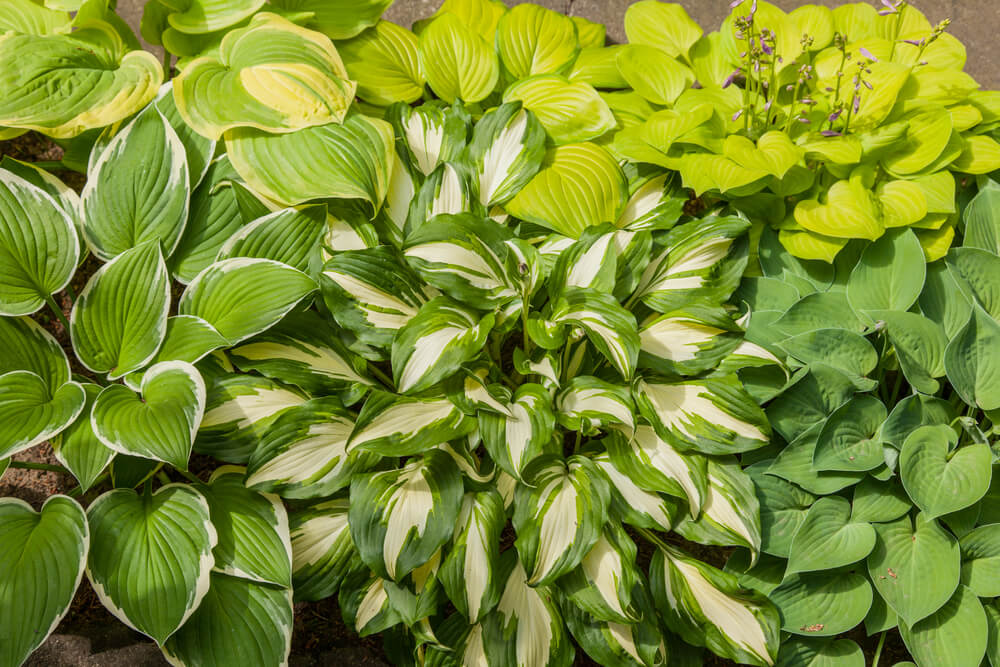
Hostas are always a good choice for shady places: they’re attractive, versatile, and extremely hardy, suitable for zones 3 to 8 – i.e., pretty much anywhere in the country. In areas with hot summers, they will need a little supplemental water to stay happy, but otherwise they can be left alone to do their thing. While hostas do bloom, and quite beautifully, their biggest asset – in more ways than one – is their large, lush foliage, which looks quite tropical and comes in an incredible range of hues and patterns. For a really eye-catching border, try planting several different varieties next to each other.
2. Coral Bells (Heuchera americana)
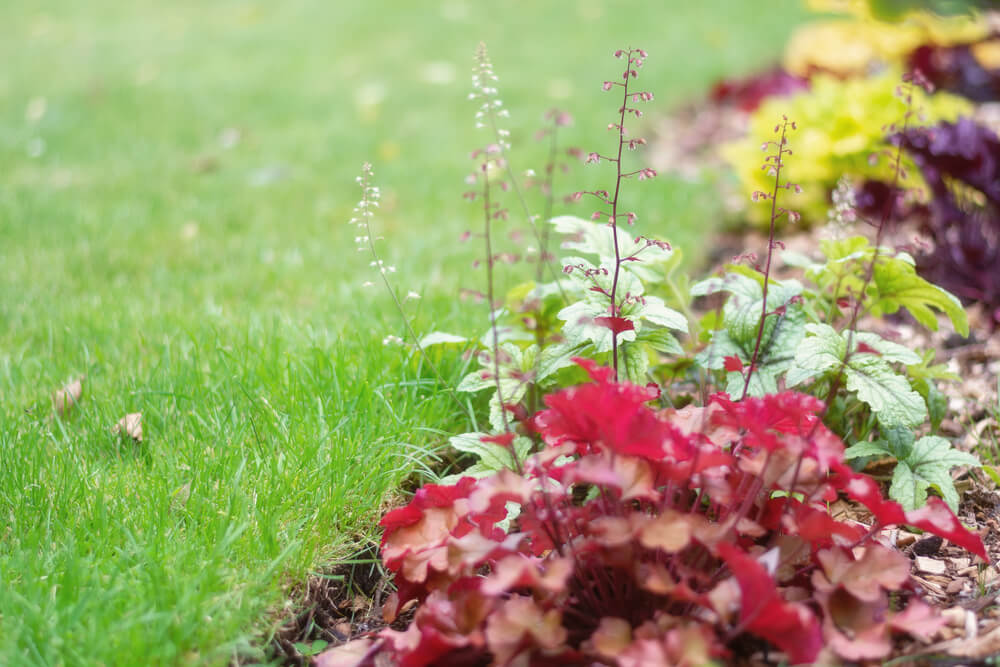
It’s always good policy to use plants native to your area whenever you can, as they’re usually better adapted to your climatic conditions. This is certainly true of coral bells, which are remarkably hardy plants that are also extraordinarily lovely. Coral bells provide an intriguing contrast between their broad, strikingly-colored foliage and their long, delicate inflorescences, which can be white or pink, depending on the variety. For many gardeners, however, the real star of the show is the foliage, which comes in an incredible range of colors. Best of all, they require very little maintenance — though dividing your plants every few years will restore their vigor and make them bloom better.
3. Spiderwort (Tradescantia spp.)
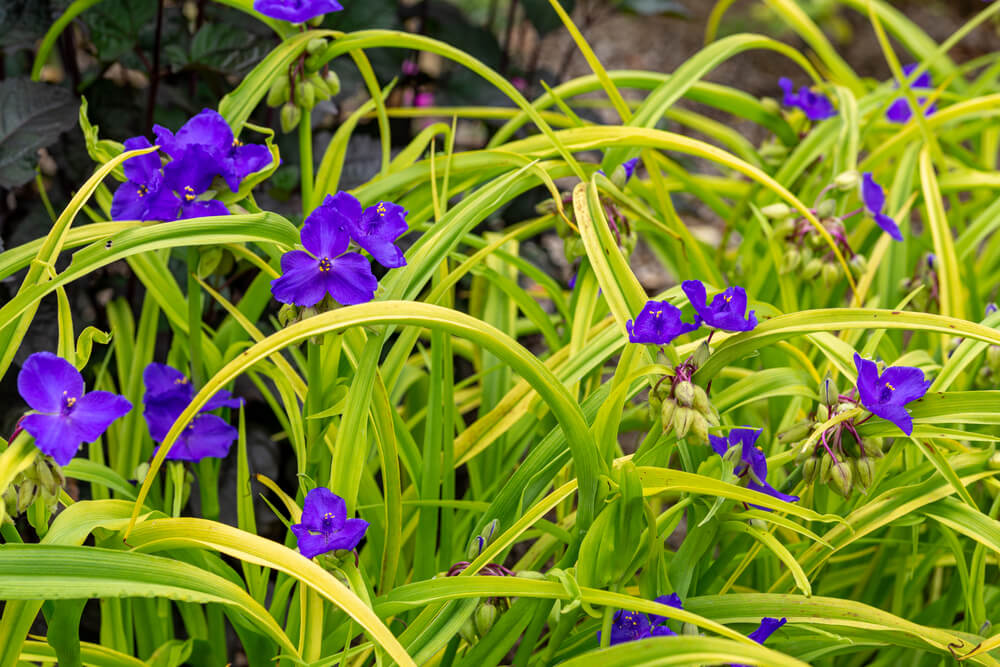
You may be familiar with spiderworts already by way of purple heart (Tradescantia pallida) or inchplant (T. zebrina), both of which are beloved by gardeners for their succulent foliage and ability to thrive in even the most adverse conditions, from deep and swampy shade to bone-dry full sun. But don’t limit yourself: dozens of species and cultivars are available in a wide range of colors and structures, from colorful ground covers to lush, almost shrub-like borders.
4. Toad Lily (Tricyrtis hirta)

Toad lilies look a little like ordinary garden lilies designed by Yayoi Kusama – which makes sense, since they’re native to Japan. These colorful, polka-dotted beauties bloom in the heat of summer when most other plants are trying to keep from wilting, and their unique form – tall and straight, with big leaves – provides interest throughout the growing season. They will even self-seed on good soils, which means that you might never have to buy new plants again. These tough, shade-loving lilies are proof that sunny gardens don’t always get the most fabulous plants!
5. Columbine (Aquilegia)
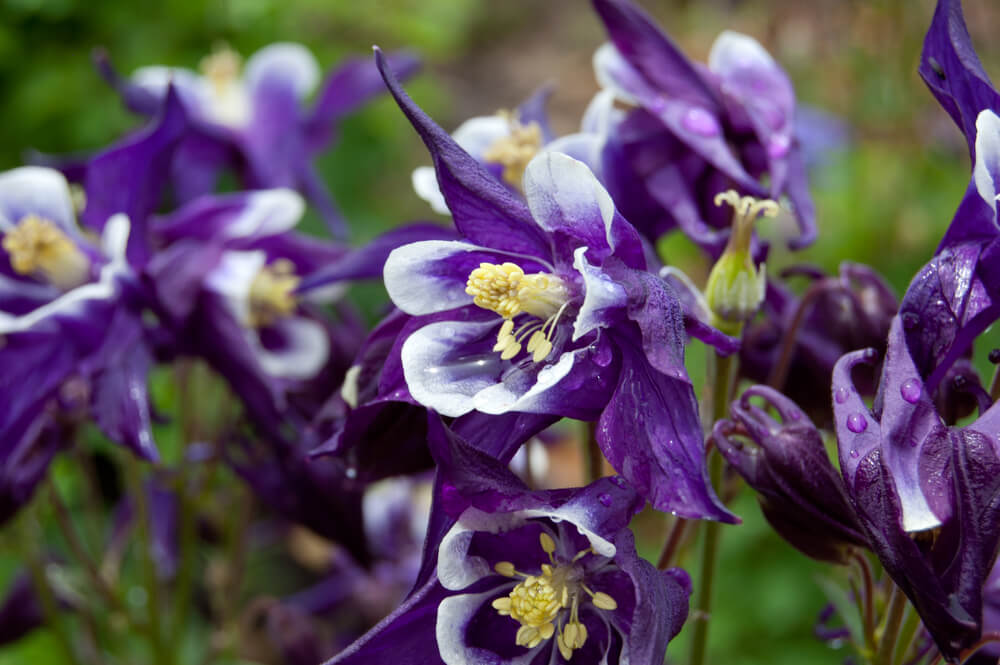
What would a list of shade-loving perennials be without columbines? These showy ornamentals pretty much have it all: they’re hardy, pest-resistant, and thrive in the shade, and their striking flowers are the stuff of songs and poems (just ask someone from Colorado, whose official state song is “Where the Columbines Grow”).
The long-lasting popularity of columbines means that gardeners have an incredible array of choices when it comes to size, color, and care requirements, so no matter your preferences there’s probably a variety just right for your garden. Most columbines are perennials, but unlike many perennials they self-seed easily, which makes them extra-low maintenance: once your columbines are established, they’ll do your replanting for you!
6. Astilbe (Astilbe spp.)
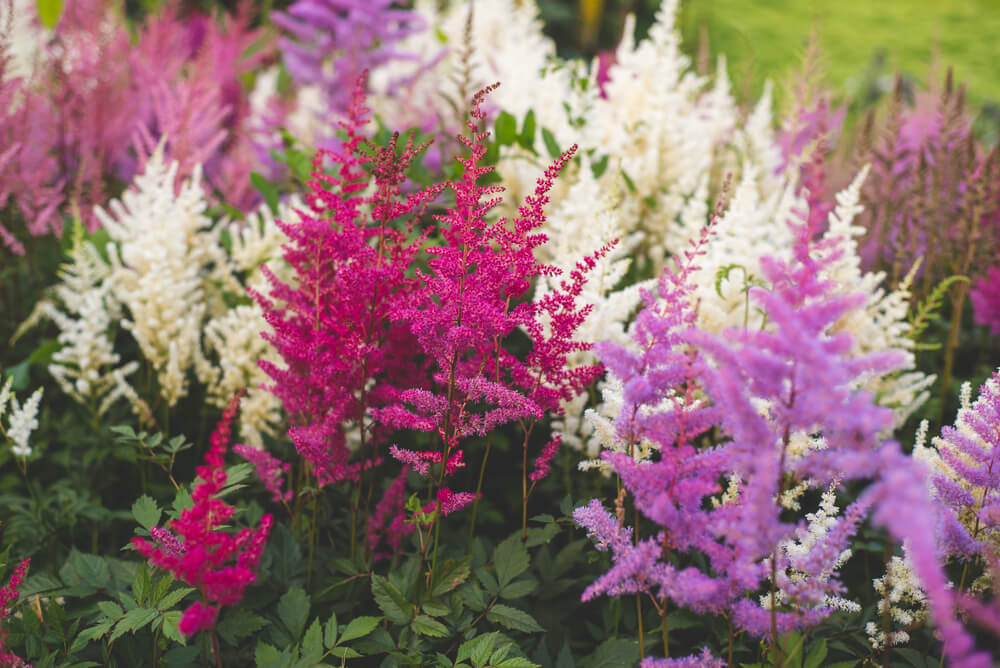
Sometimes called false goat’s beard, astilbes can provide a lot of value for very little work. Their finely-textured (and evergreen) foliage forms fern-like mounds and clumps that add texture and variety to shade gardens, while their showy pink, purple, and white flowers bloom in even the deepest shade. Best of all, they’re true “plant it and forget it” perennials, requiring only consistent water to thrive year after year. Most ornamental varieties are originally from Asia, and only reach hip-height, but the sole native North American species (Astilbe biternata) is truly colossal, topping out at six feet!
7. Climbing Hydrangea (Hydrangea anomala)
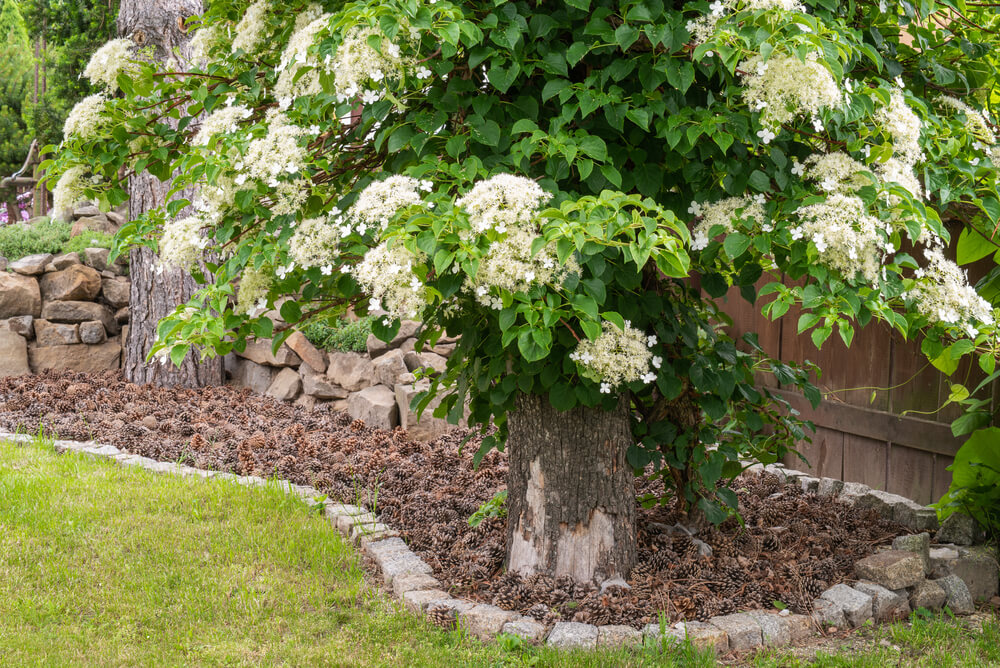
Climbing hydrangea is a bit of an outlier among hydrangeas (which explains its specific epithet, meaning “strange” or “unusual”). For starters, it’s a vine, not a shrub – and a long one at that, easily reaching 50 feet or more. And while most species of hydrangea are at least somewhat shade-tolerant, climbing hydrangea positively loves it, and will bloom beautifully even in full shade. Although it requires some extra attention the first year or two after planting, once it’s established it’s virtually maintenance-free, and its exfoliating bark provides a unique texture even when the leaves and flowers are long gone.
8. Bugleweed (Ajuga reptans)
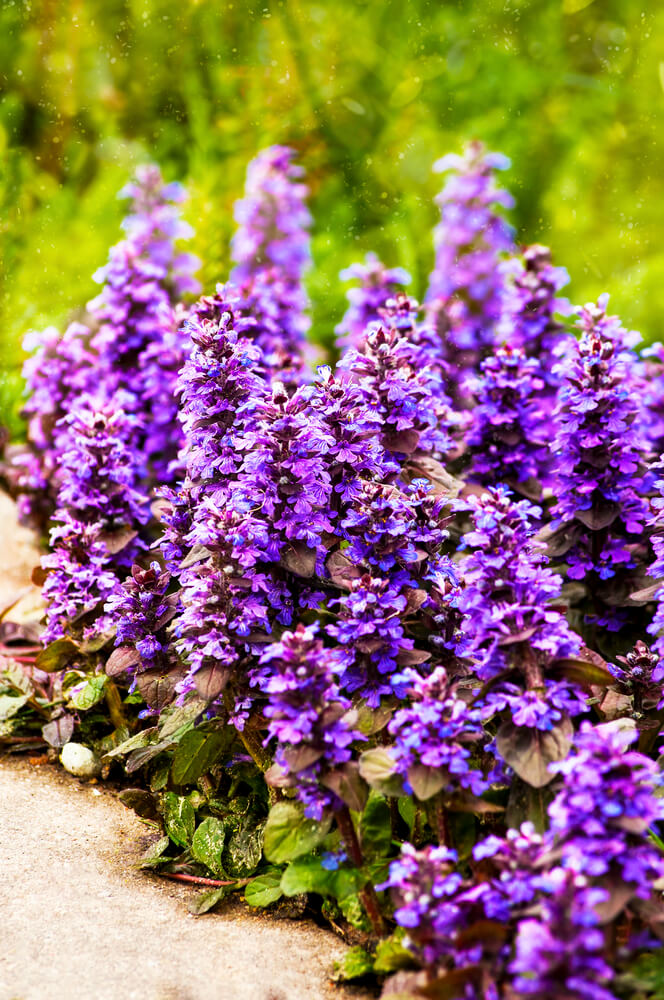
For those problem areas where the sun never seems to shine, where even the hardiest ornamentals just won’t establish, bugleweed might just be the answer. Bugleweed thrives in the deepest of deep shade, grows virtually everywhere in the lower 48, and is impressively tolerant of drought and poor soil. Its low, spreading growth habit makes it a great candidate for ground cover, but its striking blue-violet flowers are worth highlighting in a border or bed. In good conditions, bugleweed can become aggressive, so make sure to give them some space and keep an eye on them to make sure they don’t expand outside their.
9. Sedges (Carex spp.)
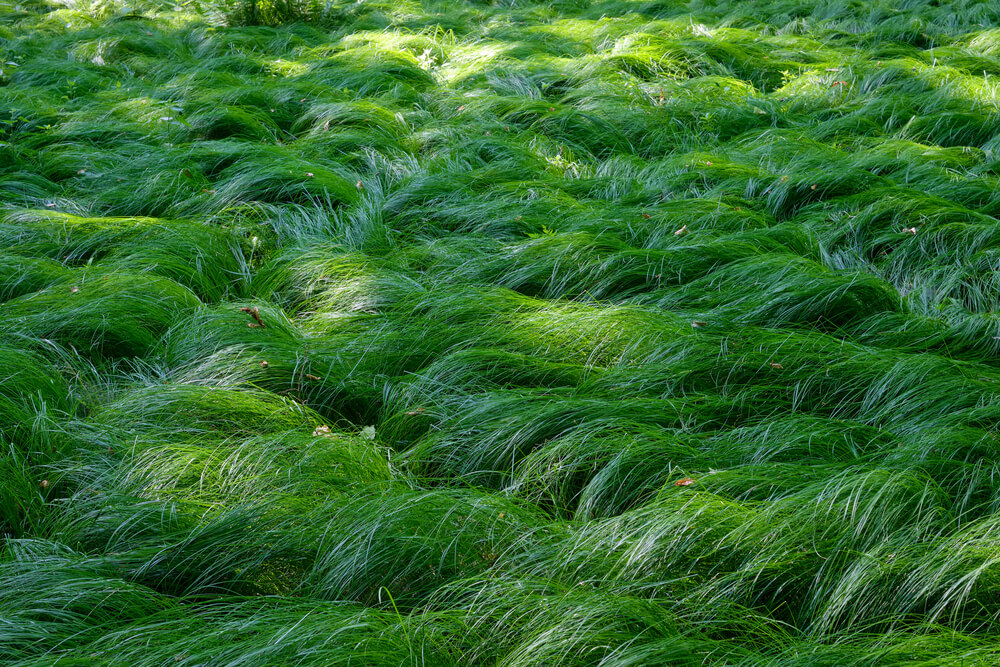
Lawn grasses are notoriously hard to establish in shade, and even the species advertised as “shade-tolerant” often don’t perform well without at least a few hours of direct sunlight. Sedges look and behave much like lawn grasses, and serve similar roles in woodland ecosystems where grasses are rare, but unlike most grasses, they grow best in deep shade rather than full sun. For extra-shady yards, they can even be used as a lawn replacement, although they are not as tolerant of foot traffic as turfgrass. There are literally thousands of species, all fairly similar in appearance, so don’t be afraid to ask for help when you’re shopping around!
10. Bleeding Hearts (Dicentra spp.)
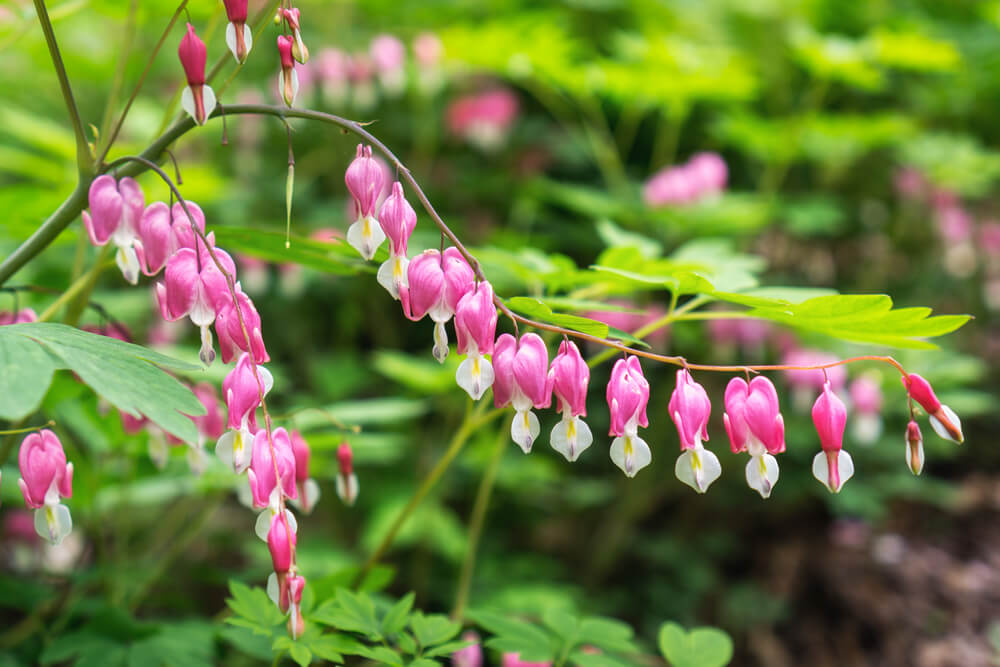
Named for their flowers – which do indeed look like little hearts – bleeding hearts are members of the poppy family, but their feathery leaves and long, leafless flowering stalks don’t resemble many other flowers you’ve ever seen. While they may look like something from a fairy tale, these hardy natives are a lot easier to care for than you might think. Free of serious diseases and resistant to pests (including deer), bleeding hearts thrive in deep shade, and are cold-hardy to zone 3.
11. Bigroot Geranium (Geranium macrorrhizum)
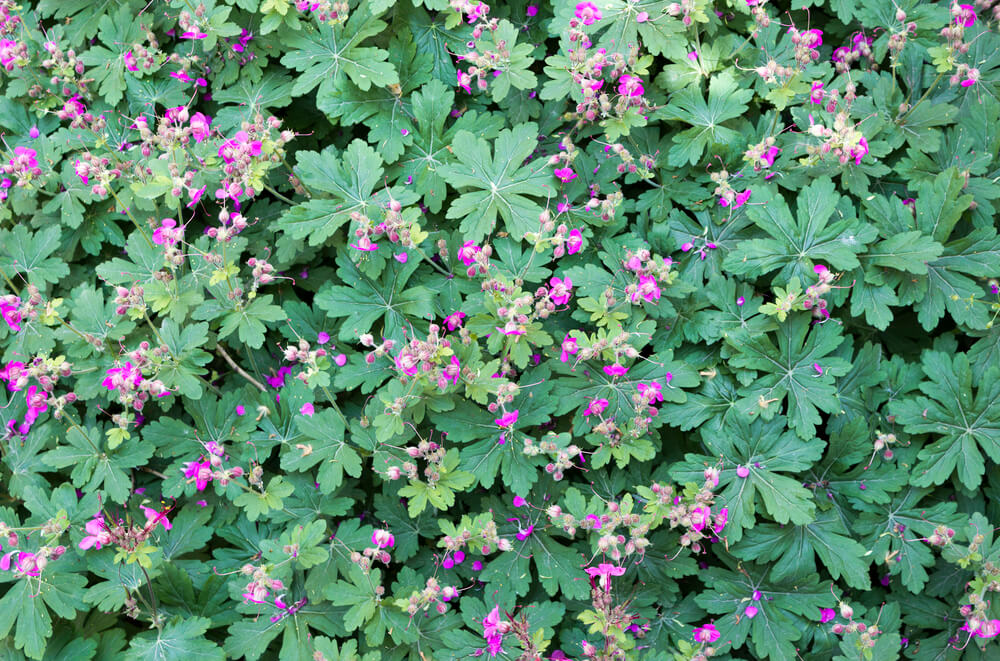
Beginning gardeners love geraniums because they’re so tough. They handle adverse conditions — including neglect — with grace, and even if they die back to the ground, they’ll usually resprout without any hard feelings. Even compared to its cousins, however, bigroot geranium is one tough plant, and is a true workhorse of the shade garden. Its eponymous roots (actually rhizomes) store water and energy, so it handles drought and shade better than any other variety, and might be the only variety that can really thrive in full shade. Its deep magenta flowers are showy and prolific, and unlike most geraniums, it doesn’t even need to be cut back after flowering. It’s also a versatile plant in the garden, equally attractive as a specimen, border, or ground cover. No matter where you plant them, you won’t be disappointed – few plants offer more value for less work.
12. Ferns (Polypodiopsida)
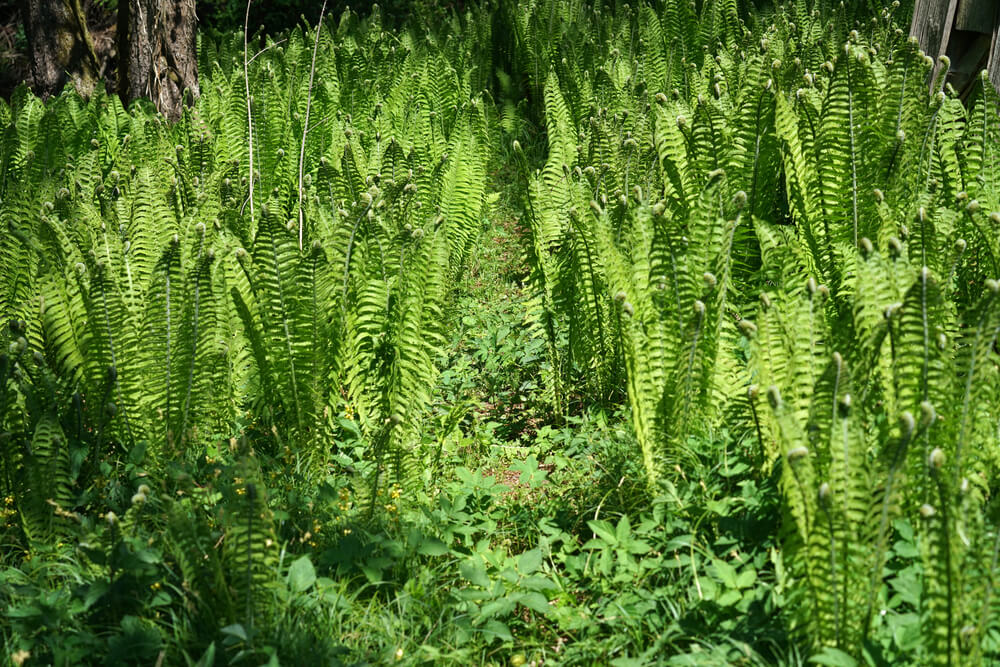
Ferns are some of the most ancient plants on Earth, as well as some of the hardiest: while most people think of them as fairly delicate, they can be found in climates as extreme as the Siberian tundra and the deserts of the American southwest. Suffice to say they’re tough plants, and there’s an amazing variety of outdoor ferns that can brighten even the shadiest garden. Listing all the low-maintenance, shade-loving ferns would fill a book of its own, but a few of the most popular are Christmas fern (Polystichum acrostichoides), cinnamon fern (Osmundastrum cinnamomeum), and bracken (Pteridium aquilinum), all of which will thrive in deep shade and nothing more labor-intensive than a little watering in the summer.
13. Hardy Fuchsia (Fuchsia magellanica)

Fuchsias have been garden staples since the 1700s, beloved by many gardeners not only for their phenomenally beautiful and distinctive flowers but their shade tolerance. Although most are technically perennials, ornamental varieties are usually grown as annuals because of their susceptibility to frost. Not so the aptly-named hardy fuchsia: not only is it cold-hardy to Zone 5, but it’s extremely low-maintenance, requiring only occasional watering in summer.
14. Vinca (Vinca minor)
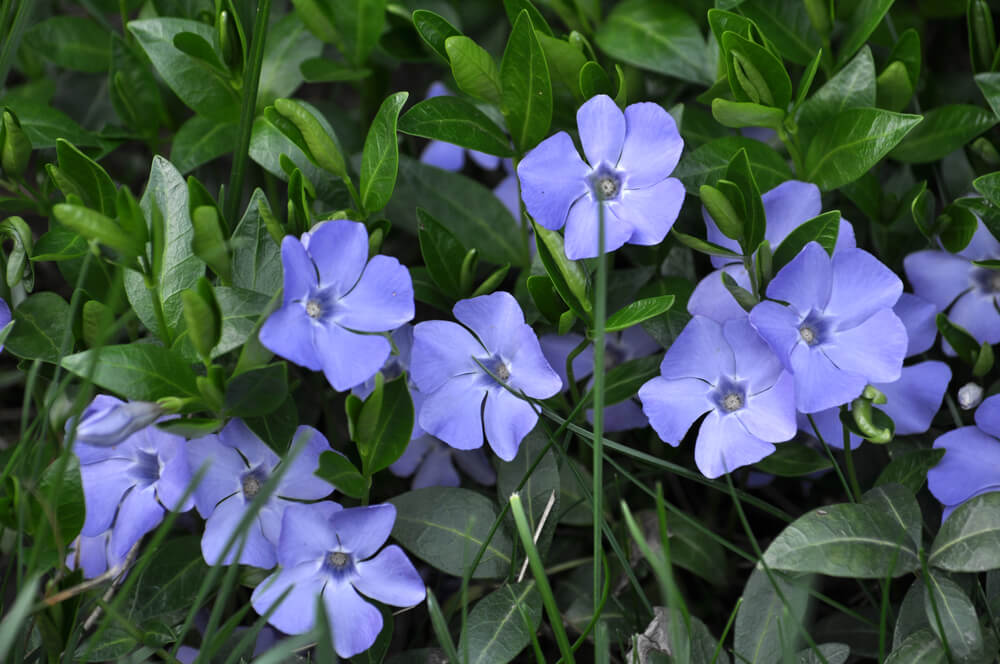
Vinca or periwinkle is a classic choice for shaded areas where a ground cover of some kind is needed. These plants thrive in deep shade, and their resistance to pests and diseases makes them a great choice for beginning gardeners, since they won’t need much babying to establish. Once they do, you can look forward not only to a glossy, deep green ground cover year-round, but a sea of beautiful pale-blue flowers every spring too!
15. Woodbine (Clematis virginiana)
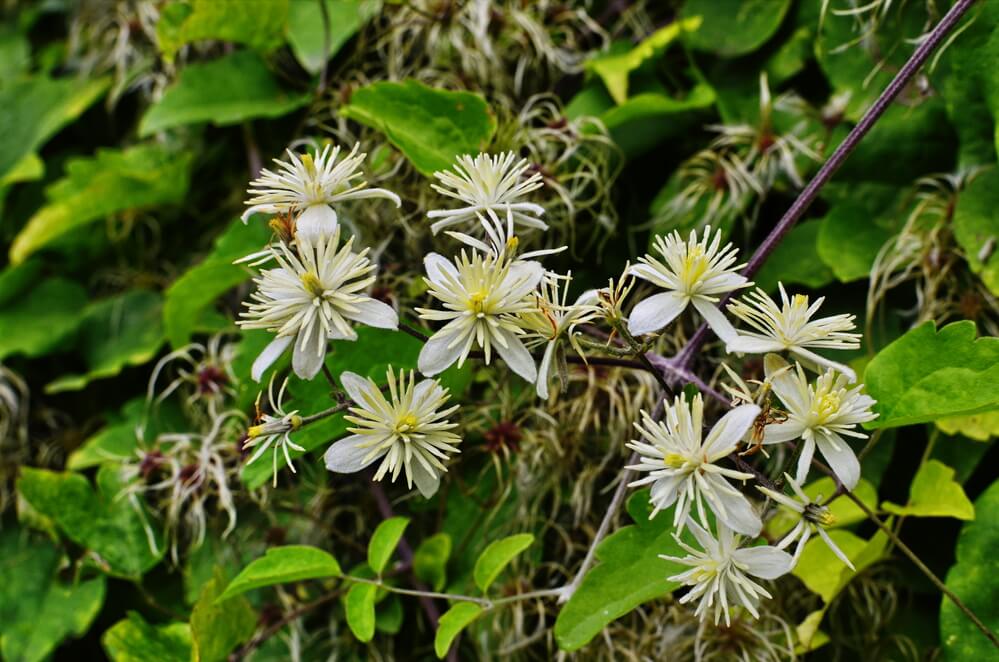
Climbing vines that bloom in the shade are hard to come by. It’s only natural, when you think about it – they’re used to being on top, and they’re not afraid to work to get there. However, on the short list of shade-loving, flowering vines, woodbine deserves a high place. It’s a fast-growing, low-maintenance native, and while its flowers aren’t quite as showy as some of the more common varieties, they’re still quite beautiful, and bloom in autumn, a last taste (and smell!) of spring before the weather starts to turn. (If you want maximum blooms, pick male plants – their flowers are larger than females.)
16. Lily-of-the-Valley (Convallaria majalis)
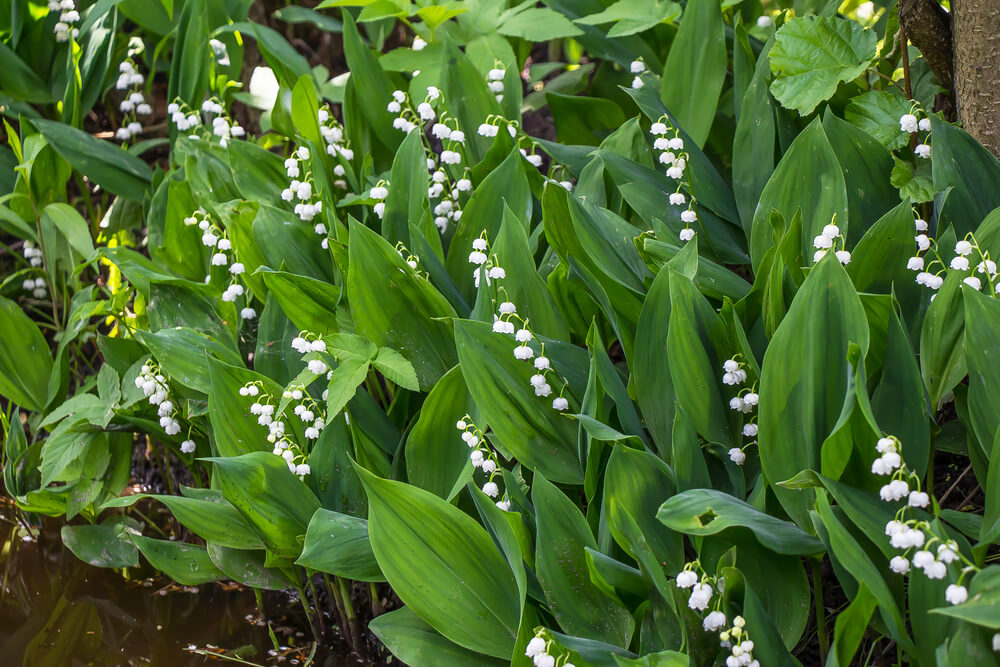
The impossibly fragile, bell-like flowers of lily-of-the-valley below its true nature: this is one hardy plant. It tolerates not just shade but pretty much anything else you can throw at it, from drought to heavy clay, and it’s cold-hardy as far north as Montana and Maine (zone 3)! You can even grow them from root cuttings, which makes getting new plants as easy as dividing your established plants. This will invigorate the originals, too, so you’ll see even more flowers the following spring.
Frequently Asked Questions About Low-maintenance Perennials for Shade
Which perennials grow best in the shade?
Hostas, lily-of-the-valley, and bleeding hearts are a few perennials that grow best in deep shade.
What is easy to grow in the shade?
Coral bells, bigroot geraniums, and hostas are some of the easiest plants to grow in a shade garden, because they’re exceptionally hardy and can survive even in harsh conditions.
What perennials like full sun and bloom all summer?
Most of our best-known garden plants prefer full sun, including marigolds, zinnias, roses, and most vegetables. Plants that grow in full sun are generally faster-growing, because they receive more energy from sunlight.
What flower needs the least amount of sun?
Many plants that are commonly grown as houseplants would probably make this list, since they can get by without any direct sunlight whatsoever. The most shade-tolerant of these are often originally from rainforests, where less than 5% of the sunlight at the canopy reaches the forest floor.
Of the plants on this list, bugleweed, hostas, and some ferns are some of the most shade-tolerant.
Is there a plant that can live without sunlight?
Yes and no. Some plants, like dodder (Cuscuta), broomrape (Orobanche), and some orchids (e.g. coral-root orchids, Hexalectris), have actually lost the ability to photosynthesize. Instead, they parasitize other plants for the energy and nutrients that they need. However, there aren’t any houseplants or garden plants that can survive without light
16 Serene and Stunning Shade-Loving Perennials
Shade presents unique challenges for plants, as well as for gardeners, but that doesn’t mean you can’t grow beautiful and interesting gardens in deep shade – in fact, it’s probably a lot easier than you think! Successful shade gardening is all about picking the right plants, and there are plenty of beautiful, unique, and low-maintenance plants that thrive in the shade.
In general, perennials that are hardier and more shade-tolerant grow more slowly, because they get less energy from photosynthesis than plants in full sun. They may also have fewer or smaller flowers, since producing flowers takes a lot out of a plant. You may want to establish your shade plants via transplanting to address the first point, and minimizing fertilizer use will stimulate your shade plants to produce more flowers and fewer leaves.
That said, there’s no reason your shade garden has to be modest or austere, and it doesn’t mean you’ll have to wait years to achieve the shade garden of your dreams. As the list above shows, there are plenty of shade-loving ornamentals with spectacular flowers, and plenty more that are incredibly vigorous growers – sometimes both!
Once you start your shade-garden journey, you’ll find there’s a whole world of plants out there that sunny gardens never get to see. Soon you’ll find that a shady garden isn’t an obstacle but an opportunity – you might even find it hard to go back to full sun!



